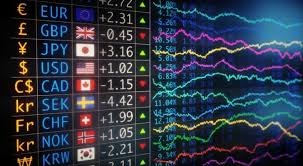
Understanding Leverage in Forex Trading
In the dynamic world of forex trading, leverage plays a crucial role in determining how traders manage their capital. It allows traders to control larger positions with a relatively small amount of invested capital. For those interested in the forex market, understanding leverage is essential. In this article, we will explore the specifics of leverage in forex trading, its benefits, risks, and ways to use it effectively. Additionally, if you’re looking for forex trading what is leverage Trading Brokers in Bangladesh, this guide can help you in your search.
What is Leverage?
Leverage in forex trading refers to the use of borrowed capital to increase the potential return on investment. In simpler terms, it allows a trader to control a large amount of money in the forex market without needing to have the entire capital upfront. This is often expressed as a ratio, such as 1:100 or 1:500, indicating how much capital the broker will lend to the trader. For instance, with a leverage of 1:100, a trader can manage a $10,000 position by using just $100 of their own capital.
How Leverage Works in Forex Trading

Each forex broker offers different leverage ratios based on their policies and the regulations of the countries they operate in. When a trader opens a position, they are required to deposit a margin, which is a percentage of the total value of the trade. The higher the leverage, the lower the margin requirement. For example, with a leverage of 1:100, a trader would only need to deposit 1% of the total trade amount as a margin.
For example, if a trader wishes to open a position worth $10,000, they would only need to put up $100 of their own capital as a margin with 1:100 leverage. This magnification of trading power can lead to significant profits, but it also amplifies potential losses.
Benefits of Using Leverage in Forex Trading
- Increased Profit Potential: The primary advantage of leverage is the potential for larger profits. Since traders can control larger amounts than they have in their account, a small price movement in the favorable direction can yield substantial profits.
- Lower Capital Requirement: Leverage allows traders to begin trading with smaller amounts of capital, making forex trading accessible to a wider audience. This democratization of trading can encourage more individuals to participate.
- Diversification Opportunities: With the enhanced purchasing power that leverage provides, traders can diversify their portfolios by entering multiple positions simultaneously, which can help mitigate risk.
- Flexibility in Trading Strategies: Leverage enables traders to implement various strategies that require a larger capital base without needing to secure that amount upfront.
Risks of Using Leverage in Forex Trading
While leverage can amplify profits, it also increases the risk of significant losses. The potential for loss is proportional to the leverage used. For example, using 1:100 leverage means that even a 1% adverse movement in the market can wipe out the trader’s capital. Here are some key risks associated with leverage:

- Amplified Losses: Just as profits can be magnified, so can losses. A highly leveraged position can result in a rapid depletion of the trader’s account if the market moves against their position.
- Margin Calls: If the equity in a trader’s account falls below the required margin level, the broker may issue a margin call, requiring the trader to deposit additional funds to maintain their positions. Failure to meet this requirement can lead to forced liquidation of positions at a loss.
- Psycho-emotional Stress: Trading with high leverage can lead to increased stress and emotional decision-making, which may result in poor trading choices.
How to Use Leverage Effectively
To maximize the benefits of leverage while minimizing its risks, traders should consider the following strategies:
- Use Lower Leverage Ratios: Instead of opting for the maximum leverage available, traders should assess their risk tolerance and use a lower leverage ratio that aligns with their trading strategy and risk management plan.
- Implement Strict Risk Management: Utilize stop-loss orders to minimize potential losses and adhere to a solid risk management plan. A common guideline is to risk only 1-2% of the trading capital on a single trade.
- Stay Educated: Continuous learning through courses, reading, and practice can help traders understand market dynamics and leverage implications better, enabling them to make informed choices.
- Monitor Positions Regularly: Keeping a close watch on leveraged positions can help traders respond quickly to market changes and take necessary actions to protect their capital.
Conclusion
Leverage is a powerful tool in forex trading, offering the potential for massive profits while also bearing considerable risks. By understanding both the advantages and disadvantages of leverage, traders can make informed decisions and utilize leveraging strategies that align with their financial goals and risk tolerance. As the forex market continues to evolve, drawing insights and knowledge on how to effectively use leverage can significantly impact a trader’s success. Remember, careful management and an understanding of the market are crucial when incorporating leverage into a trading strategy.
Ultimately, whether you’re a beginner or an experienced trader, always prioritize risk management and education to navigate the complexities of forex trading successfully.